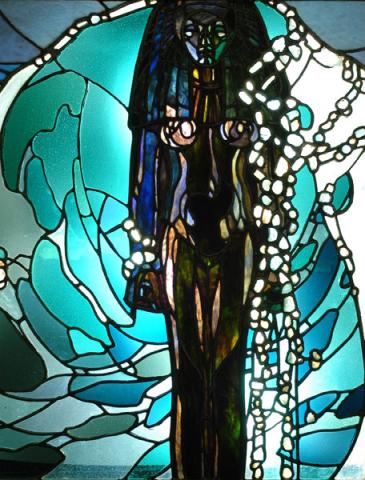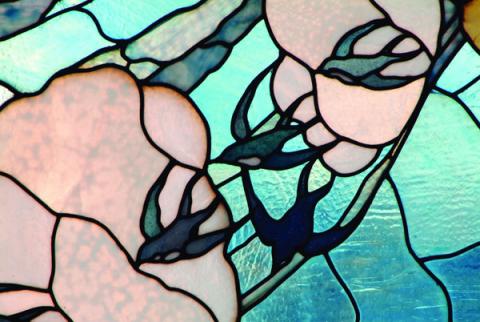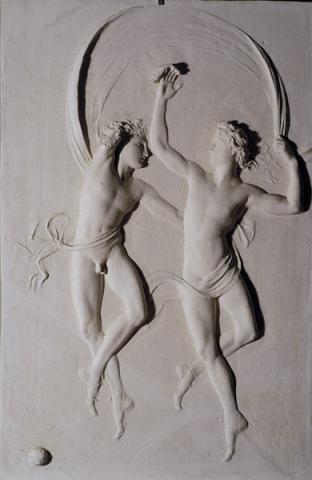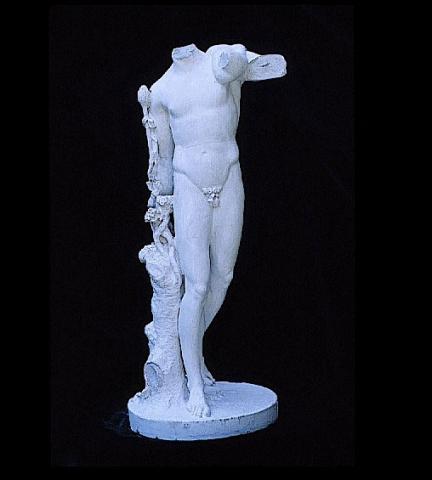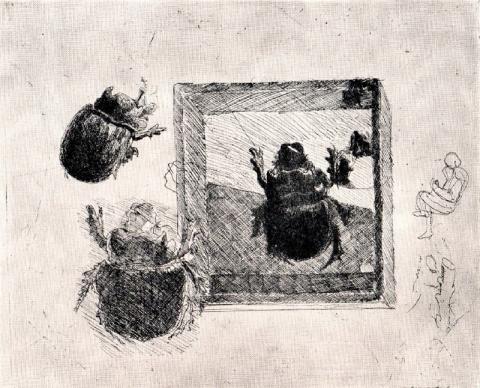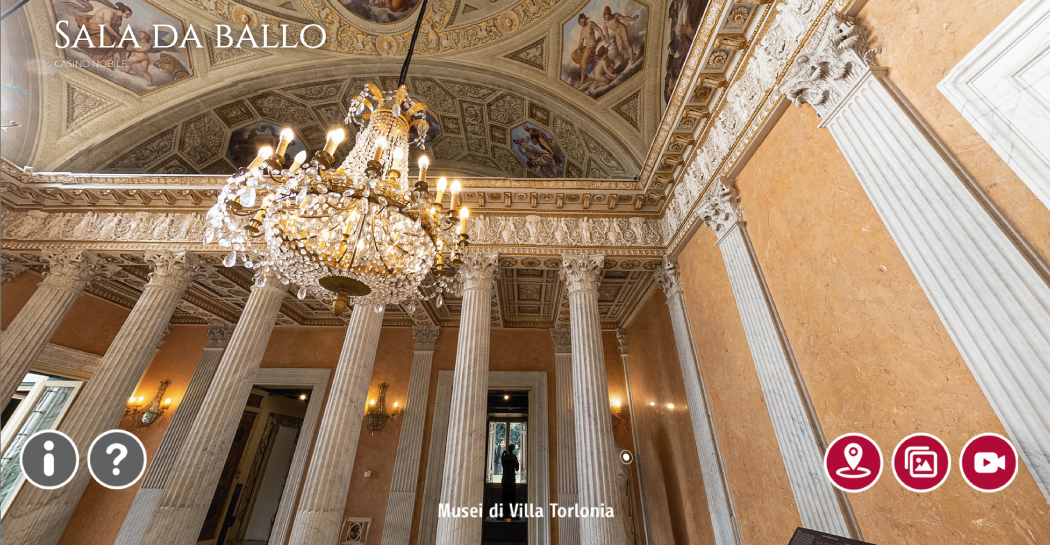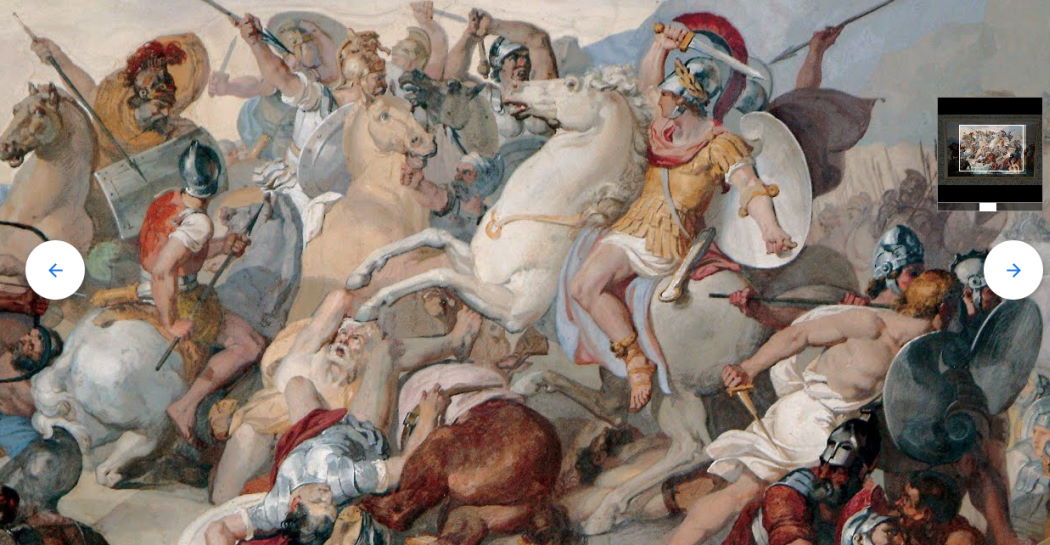The Artwork of the Month of the Roman School Museum - March 2023
Luigi Bartolini
Scarabeo Ercole, 1934
etching, ex. 7/50, h 240 x 290 mm.
on loan from Luciana Bartolini
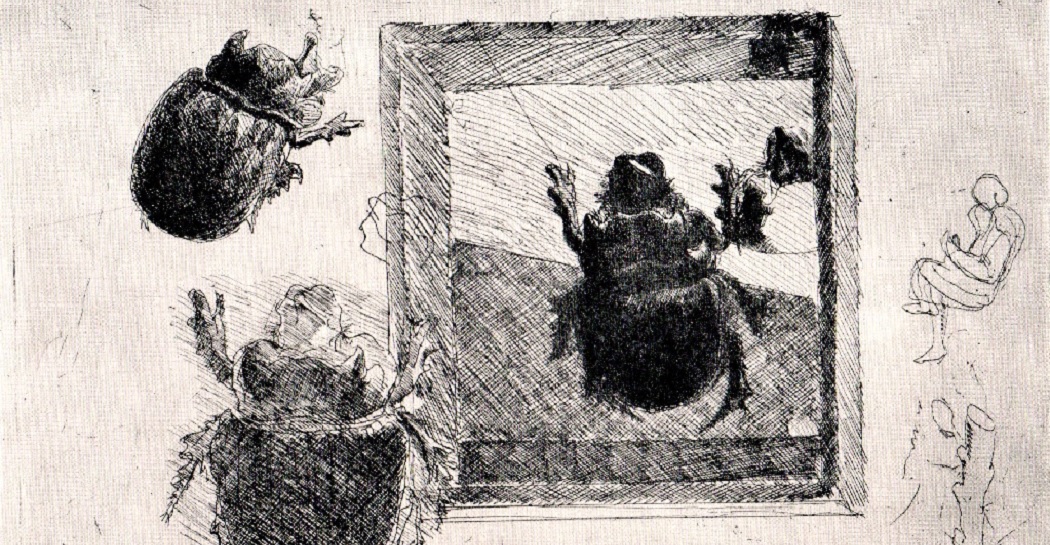
Bartolini is considered among the best contemporary Italian engravers, together with Giorgio Morandi and Giuseppe Viviani. The work presented in this section is in fact created by the artist using the etching technique, which consists of etching a metal plate with nitric acid, which is then inked to produce reproductions on paper. The subjects of Bartolini's engravings, always figurative, are taken from the real world, but sometimes in fantasy compositions, and range from the microcosm of objects, insects, plants, details, to the human figure and landscape. In this case we are dealing with a study of the Hercules beetle, an exotic species known for its magnificent strength and considerable size. On the sheet, the beetle is depicted three times in different positions, while sketched to the side, on the right, are a human figure and a tree trunk, suggesting an early proof of engraving. The central beetle specimen is set within a thickly edged quadrangular frame. The mark that characterises this, as well as other works by Bartolini, shows a painterly ability in the use of technique, in some cases with light hatching and light research, other times with a more accentuated and darker mark. This engraving was made by the artist during the period of exile to which he was relegated by the fascist regime. Among the publications in which the work appears is the exhibition catalogue Luigi Bartolini. Lines of Freedom, held at the Fine Arts Academy of Rome in 2019.
Critic Giuseppe Appella writes about Bartolini:
"One can then understand, in the culture of the 20th century, the coexistence of different modes of expression and, among these, Bartolini's visionary qualities, his obstinacy on characters, facts and fatteries, sketches of minor life, useful to trace an unusual vein, to occupy a place of consciousness where every activity takes place in parallel, without categories to defend or in which to settle. Realistic and fantastic, in which his work is normally placed, are abstract categories for Bartolini who, throughout his life, has fused both, wanting [...] to arrive at that which interests the great principle of poetry and knows no other master, no other lordship, no other command, no other voices' (Luigi Bartolini: l'arte come atto d'amore, in Bartolini, l'uomo, l'artista, lo scrittore, exhibition catalogue, Macerata, 1989, pg.10)
Luigi Bartolini (Cupramontana, Ancona, 1892 - Rome 1963) was a painter and writer as well as an engraver. His best-known literary works include: Ladri di biciclette (Bicycle Thieves), 1946 (from which Cesare Zavattini drew the subject of Vittorio De Sica's famous film of the same name); Il ritorno sul carso (The Return to the Karst), 1930; Passeggiata con la ragazza (A Walk with the Girl), 1930 and 1962; Credo d'artista (Artist's Creed), 1945 and Poesie (Poems), 1954.
The young Luigi already found a certain predisposition for the arts and literature in his family environment; his father had been a headmaster with a passion for the classics and his maternal uncle, Elia Bonci, was the author of a text on shadow theory. After his technical studies in Jesi, Luigi Bartolini moved to Siena, in 1907, where he enrolled at the Institute of Fine Arts. In 1909, he moved to Rome, where he attended the Academy of Fine Arts and the Academy of Spain; later, he was in Florence, where he attended lessons in architecture, anatomy and nude painting at the local Academy. These were the central years for his education during which he met the poet Dino Campana and the painter Ardengo Soffici. The outbreak of the First World War and the call to arms abruptly interrupted his artistic activity. He fought on the Piave, Karst and in Cyrenaica as an artillery officer, receiving a bronze medal for valour and a cross of merit. Once the war was over, in 1919 he was in Macerata as a teacher in a vocational school, and subsequently received various assignments that caused him to change cities. In the meantime, he increased his activity as an engraver, as well as a painter, until he was awarded the Diploma of Grand Silver Medal by H.M. the King in 1922, following his participation in the Provincial Art Exhibition in Macerata. In 1928, he was called upon to exhibit his works for the first time at the Venice Biennale, an event in which he took part regularly until 1962, a year before his death, and where he enjoyed a personal room both in the 1942 edition (XXIII Biennale) for which he was awarded the Grand Prize for Engraving, and in his last participation. There is no lack of other important recognitions, including the 1932 prize obtained ex equo with Giorgio Morandi and Umberto Boccioni (in memory) in the Esposizione del Bianco e Nero at the Uffizi Gallery in Florence. Unexpectedly, during his period of residence in Osimo, in the Marche region of Italy, he was arrested in 1933 on the charge of 'maintaining secret correspondence with exiles'. After a month in prison in Ancona, he was confined first to Montefusco and then to Merano where he remained until 1938. In 1945, Bartolini recounts his own odyssey regarding the events of political confinement in a short book, Perché do ombra. Despite the suffering of confinement, this was to be one of his most fruitful periods. Meanwhile, in 1935, the II Quadriennale d'Arte in Rome dedicated a room to him, awarding him the first prize for engraving, an event that was repeated in 1939. In 1937, he was awarded the Gold and Bronze Medals at the Exposition Internationale des Arts et des Tecniques in Paris. After his confinement in Merano, he returned to Rome where he went to teach at the Museo Artistico Industriale. He was awarded a prize again in France in 1948 at the Musèe des Beaux Arts in Nancy for his participation representing Italy in the exhibition on ex libris and book illustration.
Bartolini was present at all the most important national and international art events of his time, including: London (1946), Stockholm (1947), Paris (1937-1949-1950), Zurich (1947-1949), New York (1949), Antwerp (1953), Warsaw ( 1959), Toulouse (1953), Munich( 1957), Athens (1955), Rio de Janeiro (1948), São Paulo in Brazil (1951), Lisbon (1951-1953), Brussels (1951-1953). In 1949, the Prints Cabinet in Paris purchased his etchings. In the International Black and White Exhibition in Lugano (1950), he won a prize ex equo with other artists such as Rouault, Kubin, Morandi and Delvaux. In 1951, Carlo Albero Petrucci presented his personal exhibition at the Calcografia Nazionale and attempted an initial sorting of his etching production with a catalogue in which 1,067 works were published; again at the Calcografia, he repeated two more personal exhibitions in 1962 and 1997. His literary production was also intense until the last years of his life, as a writer, poet, art critic and polemicist. In this field he counted about 70 publications with major national publishing houses (Vallecchi, Arnoldo Mondadori Editore, Longanesi, Nistri Lischi) and collaborations with numerous Italian magazines and newspapers.
In 1960, he was appointed Accademico di San Luca. In 1965 a retrospective exhibition was dedicated to him as part of the IX Quadriennale in Rome. A posthumous exhibition Bartolini, the man, the artist, the writer, mentioned above, was held in Macerata in 1989 curated by Giuseppe Appella and Vanni Scheiwiller. Further information on the artist can be found at www.luigibartolini.com.
Back to the section > The Artwork of the Month of The Museo della Scuola Romana


























